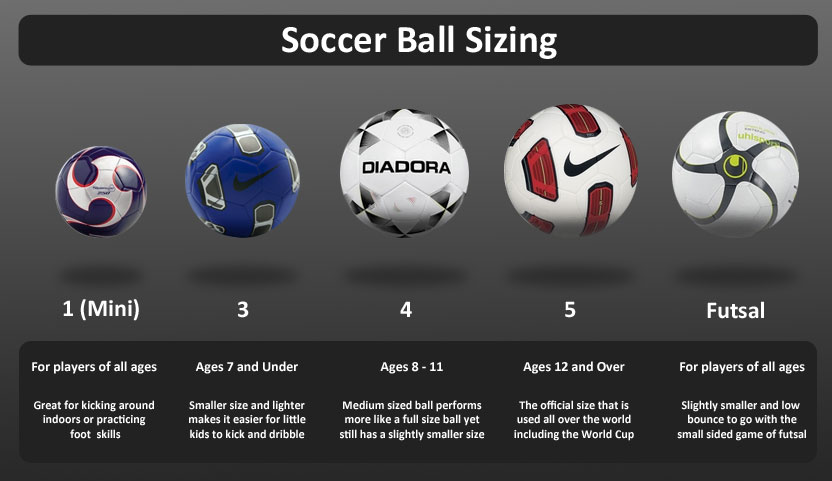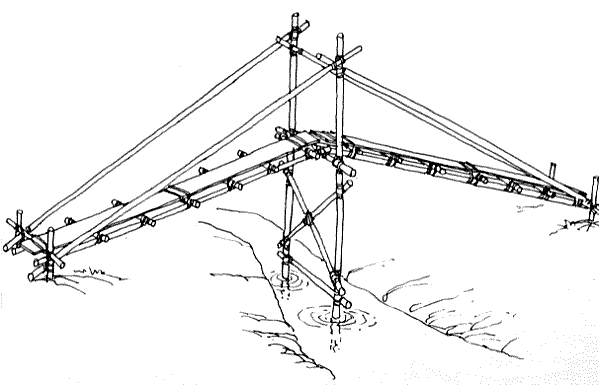-Lashings-
Lashings are used to join 2 or more poles together. Below are examples of the most common and most useful types of lashings. The key with all lashings is to remember to keep them tight, otherwise they lose their support and purpose (essential for certain projects). Also, when discussing wraps and fraps, my suggestion is at least 3 wraps, and 2 fraps. Generally this number and 3/2 ratio is the golden mark for just about every lashing.

Round Lashing: This lashing is most commonly used for flag poles or simply creating a longer pole. When used, you must use two together, or one Round and one Shear Lashing.
To make the Round lashing, start by making a clove hitch on one pole, then wrap around both poles in one direction, this is one of the few times where you will more likely do at least 5 wraps. You will not frap on this one. To finish, tie a clove hitch on the pole you did not start on.
Shear Lashing: This one is similar to the Round lashing, except it actually goes between both poles instead of just around. Again, this lashing is best if used with another or with a Round.
To make the Shear lashing, make a clove hitch on one pole, similar to the Round lashing. Now, you will complete a figure-8 pattern around the two poles for at least 5 times. Once you have completed that, you will then frap 3-4 times around the wraps. You will finish by making a clove hitch on the opposing pole.
Tripod Lashing: The movements for this lashing is the same as the Shear lashing, except it includes a third pole. As in it's name, the Tripod lashing is used for making tripods.
The image above is of a Round Lashing, take note that they did a clove hitch around both poles to start and finish the lashing. Do NOT do this. This may weaken the lashing long-term
Square Lashing: This lashing is used to join two poles that are coming together at 90 degrees to each other. This is a very common framing lashing.
To tie this lashing, you will start by making a clove hitch on one of the poles, relatively close to the crossing point. You will then do at least 3 wraps in a box shape, going over and under the pole. You will then complete at least 2 wraps around the wraps. To finish, make a clove hitch on the pole you did not start on.
Diagonal Lashing: This lashing is used to join two poles that are coming together at an angle other than 90 degrees. This is another framing lashing.
To tie this one you will start by making a timber hitch around the center of the two poles. You will then complete wrap in a manner that crosses over the two poles 3 times between two openings and then 3 times through the other two openings, and do 4 fraps around the wraps (
Remember: 3/2). You will finish by making a clove hitch onto either pole.

Floor Lashing: As with its name, this lashing is used to make a lashing. Generally you will have two framing poles (possibly put in place with Square Lashings), and multiple poles of similar diameter and length to use as your floor, the more pieces you have, the closer the flooring can be.
To make the floor lashing you will start by making a clove hitch to the framing piece. Then you will lay the flooring pieces on the frame. You will then wrap over the floor piece, then go under and over the framing piece to secure it together.
You may do the bite method as shown in the picture, or you may simply repeat the previous step for each beam. I personally prefer this model as I find it to handle better.
The above are some of the most common types of lashings and the most effective ones for pretty much every project. Beware of other images and descriptions online that have the same names, as above. Though, there are versions that have "longer" names, such as the Japanese Square Lashing, though you should only attempt those after you have practiced the others, as these types tend to be more difficult to keep tight.
From this point forward I will focus on different camp gadgets and pioneering projects that you can build on your own. I will also include a daily knot that I think is both interesting and useful.
Fuse it, Lash it, Tie on!











































